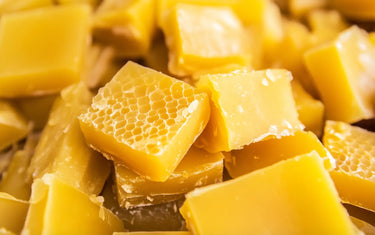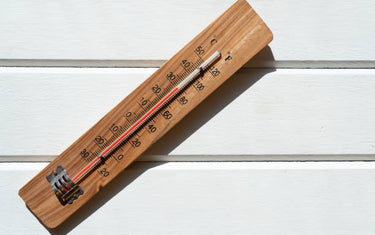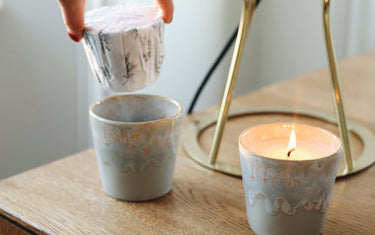5 min read / 23 April 2023 / Laura Garvin Gomez
Essential Oil Notes Explained
Discover the properties and uses of different essential oil scents with our comprehensive guide, helping you to gain a better understanding of these natural remedies.
Share this post

Essential oil notes are used to determine the strength and fragrance of each individual oil.
While every essential oil is sold ready to use individually, there are lots of ways you can blend them to make your own unique fragrance, whether it’s in a candle, soap or for a massage oil.
The blending process is easier than you imagine. Here we’ll explain more about essential oil notes and how to make your own beautiful scents. Wholesale essential oils are available at a discount from our range. Click here to sign up.
Why should you blend essential oils?If you already have a favourite essential oil, such as lavender or lemon, you may wonder why you need to mix it with other oils to make a new blend. However, the fun is discovering new scents and fragrances that are completely unique, giving you the opportunity to create something that is totally unique and reflective of your personality. The more essential oil blends that you make, the more you discover that it will add new layers to your favourite oil, rather than detracting from it. |
What is the best way to categorise essential oils?
There are three main ways of categorising essential oils, which can be done by:
- Note: Essential oils can be divided into three distinct fragrance notes: top, middle and bottom.
- Fragrance: Fragrance examples of an essential oil include spice, citrus, floral and woody.
- Effect: This describes the effect an essential oil can create, such as easing anxiety or offering a pick-me-up.
In this article we go into more detail about the different types of essential oil notes you can work with, which should make it easier to start making your own creative and unique blends.

What is a top note essential oil?
A top note essential oil describes the very first scent you will encounter when inhaling the oil. In most cases, they tend to be light and fresh, bringing your senses to life before the note quickly evaporates. Compared to middle and base notes they do not last as long, with the lower end notes tending to linger and be more dominant.
You’ll find that most citrus oils are top notes (such as lemon and grapefruit) with the likes of eucalyptus and bergamot also falling into this category. When the right top note is used in an essential oil, it can make an instant impression that encourages you to investigate the full depth of the scent, so you can enjoy its aroma however you choose to apply it.
What is a middle note essential oil?
Below the top note you will quickly start to sense the middle note of the oil, which serves as the main body of the blend. Due to their higher levels of concentration, middle notes last longer than top notes and are usually floral or herbal scents such as lavender or rosemary.
If you are blending multiple essential oils together for a recipe (be it for a soap, candle, or cleaning spray) the middle note will be the most important one to choose. Look at the various health benefits it can offer and how it will blend with higher and lower notes to create a fully rounded scent. Also bear in mind that middle notes are often used to ease anxiety and stress, lasting for up to 2 hours in some cases.
What is a base note essential oil?
At the very foundation of an essential oil blend, you will find a base note, which will last the longest. This is due to them containing heavier molecules, so your senses will be aware of the note long after the middle and top notes have evaporated. It is similar to when you spray a perfume or aftershave onto your hand, as the scent on your skin will change and leave behind the bass note once the higher notes have evaporated.
Popular bass notes used in blends are ylang ylang, frankincense and jasmine, while the likes of clary sage and peppermint are also commonly used. As this will be the longest lasting note in your blend, do some research on what other types of light oils will complement it.

Essential oil notes chart
To help you get started with your first blend, take a look at our essential oil notes chart which divides your favourite oils into note categories so you can mix them together to create an exciting new blend.

| Top Note | Middle Note | Base Note |
|---|---|---|
| Bergamot | Rose Geranium | Peppermint |
| Basil | Geranium | Frankincense |
| Eucalyptus | Palmarosa | Cedarwood |
| Grapefruit | Coriander | Patchouli |
| Sage | Cinnamon | Vetiver |
| Lemon | Clove Bud | |
| Lemongrass | Nutmeg | |
| Lime | Cypress | |
| Sweet Orange | Juniper Berry | |
| Petitgrain | Clary Sage | |
| Pine Needle | Marjoram | |
| Spearmint | Oregano | |
| Citronella | Citronella | |
| Lavender | Lavender | |
| Rosemary | ||
| Tea Tree |
How to blend essential oils by note
You can use the information above as the start point for blending essential oils by note.
As we mentioned, oils evaporate at different speeds, so by creating a blend that consists of different notes, you can enjoy a fragrance that will change in a similar way to how perfumes and aftershaves evolve once sprayed onto the skin.
- When it comes to blending essential oils by note it is a good idea to follow the 30/50/20 rule. This makes it easier to find the right balance between the oils used in your blend, with 30% being top note, 50% middle note and 20% base note.
- For example, if you used a total of 10 drops in your blend, this would mean using 3 drops of a top note, 5 of a middle note and 2 of a base note.
- Of course, some blends use more than three oils, so you can apply the same ratio using a different combination of oils. For example, this could be 20% of one top note with 10% of another top note, combined with 50% middle and 20% base. Alternatively, you could use 30% top, 20% of one middle with 30% of another middle, finished with 20% base.

Making your own essential oil note blend doesn’t have to be complicated, especially once you know where each one sits on the scale.
Once you have made your blend, we recommend storing it in an amber glass bottle in a cool, dry location away from heat and light – you should also wait at least 48 hours before using it for the first time.
And when you are ready to use your essential oil, always carry out a patch test and use a carrier oil to ensure it is safe for application.
Where to find essential oils
At Nikura, we have a wide range of essential oils to suit your needs, as well as a wholesale program that means you won’t break the bank.
With year-round discounts, no minimum order quantity, and high-quality customer service, Nikura wholesale could be the perfect solution for you.
Sign up is simple and will only take a couple of minutes, allowing you to unlock great deals instantly.









